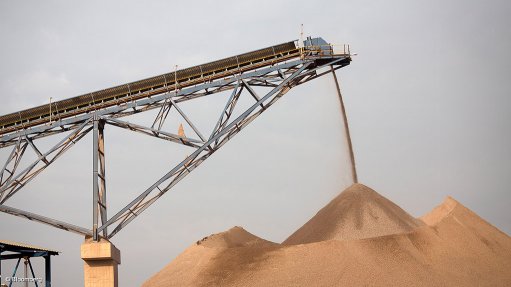
JOHANNESBURG (miningweekly.com) – Australian gold production rose to its highest level since the June quarter of 2003, during the three months ended December, as producers responded to lower gold prices by treating less low-grade material resulting in higher output and reduced costs, mining consultancy Surbiton Associates reported on Sunday.
Surbiton said gold production for the December quarter increased by 4% to 74 t quarter-on-quarter, while the total gold output for the 2013 calendar year was estimated to be 273 t, up 7% on that of 2012.
“The 2013 total gold output of 273 t is the highest annual figure since 2003,” Surbiton director Dr Sandra Close said, adding that owing to lower gold prices producers were focusing on “quality ounces”, which was flowing through to a reduction in costs across the board.
“However, the downside in processing higher-grade ore is that some lower grade material that was economic to treat at higher prices, is no longer profitable,“ Close added.
The new Tropicana project, which AngloGold Ashanti and Independence Group own, boosted the December quarter output. The mine had its first full quarter of production. The project was brought into production ahead of time and on budget, and produced 95 000 oz of gold during the period from 4.7-million tonnes of ore.
The increase in the quarter’s gold production was also supported by AngloGold’s Sunrise Dam mine that increased its production by 41 000 oz during the period, Newcrest’s Telfer project, which achieved an increase of almost 25 000 oz, Doray Minerals’ Andy Well operation that increased production by almost 10 000 oz and Regis Resources’ new Rosemont mine, which produced over 8 000 oz in its first quarter of operation.
However, production from a number of well-established operations declined during the December quarter, Surbiton said.
Output at Barrick Gold’s Yilgarn South Operations, which had been "driven hard" in the September quarter prior to being sold to Gold Fields, produced an estimated 31 000 oz less in the December quarter, output at Newcrest’s Cadia Hill mine fell by 15 000 oz and production at the Super pit, owned by Barrick and Newmont, fell by 14 000 oz.
Surbiton said that US dollar gold prices declined by 28% in 2013 to close the year at around $1 200/oz; however, in Australian dollar terms the fall was only 16% to around A$1 345/oz owing to the decline in the Australian dollar.
“Since the beginning of 2014, Australian dollar gold prices have increased by 11% to around A$1 485/oz currently,” Close said.
However, despite lower gold prices new operations were continuing to come into production, she added.
Alkane Resources poured the first gold from its Tomingley project in New South Wales in mid-February, while construction of La Mancha Resources’ new $100-million Mungari processing plant near Kalgoorlie was progressing well and was expected to be commissioned on low-grade stockpiled ore in the June 2014 quarter.
“La Mancha’s new 1.5-million-tonne-a-year mill should produce about 150 000 oz a year with ore sourced from the Frog’s Leg and White Foil mines,” Surbiton said.
Further, Regis Resources’ Rosemont Stage 2 development was also expected to be commissioned in the June quarter, but recent exceptionally heavy rain could have caused delays to this timetable.
Meanwhile, Close pointed out that a number of operations had changed hands during the December quarter with some overseas companies selling off their Australian mines to local companies.
Alacer sold its Higginsville and South Kalgoorlie operations to Metals X and Barrick Gold sold its Kanowna and Plutonic gold mines to Northern Star Resources. Barrick also sold its Granny Smith, Lawlers and Darlot operations to South Africa’s Gold Fields.
“Where foreign-controlled mines are sold to Australian producers, this essentially amounts to buying back the farm, and we are seeing some moves in this direction at the moment,” Close said.
“Currently overseas control of Australia’s gold mining industry is just below 60%, compared with over 70% about a decade ago when foreign takeovers were at their peak,” Close said, adding that purchases by Australian producers and increased output from new locally owned projects were expected to push foreign ownership even lower in future.